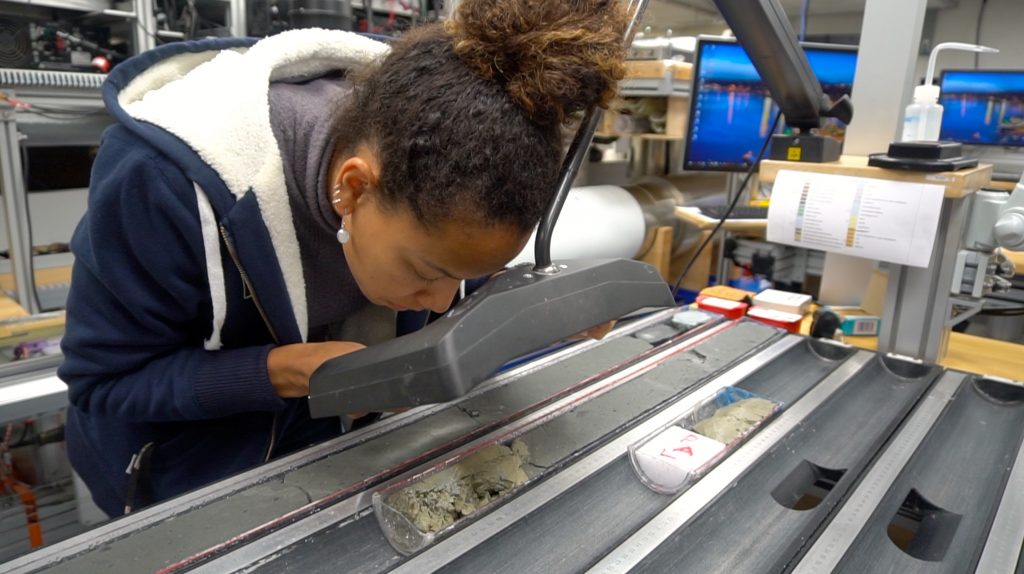
Simple Science
People who know a lot about their work can sometimes confuse people who don’t know so much, because they use some words that people listening or reading will not understand. So we tried to explain stuff with a really really small number of words, even so small it seems stupid, which means people only write about the ideas that are interesting enough to bother to explain with easy words. People did great work last week explaining things very simply!
I study dead stuff that falls to the bottom of the sea. this dead stuff in sand tells us about changes in the sea over time, like changes in heat. Today the sea is high because we have small ice on land. In the past the sea was low because water was stored in ice on land. Because the world is warming, most of the heat goes into the sea. The warm sea then eats the ice and the sea rises. This is bad for us because our home goes under the sea.
Imogen Browne, measuring and analysing the physical properties of the sediment.
I study tiny living things that live in the sea. After they die, they fall to the floor of the sea. We pick them with a big strong stick on a boat which goes down below the bottom of the sea. The body of the tiny living things is made of some stuff that in the water of the sea. If I study their bodies, I can find out what the stuff was in the sea water, and find out how the water was when they lived.
Isabela de Sousa, studying the microfossil content of the sediment.
Our world is warming, ice is turning into water and our sea is getting higher. The sea is coming into our houses and our feet are getting wet. Do we need to worry about our future? The answer can be found by studying our world’s history. I study the old parts of tiny little creatures which lived in the past on the land or in the sea. When you make a hole in the rocks or under the bottom of the sea you can find the houses of these tiny little creatures. They tell me if the sea was warmer or colder than today and when it was warmer or colder. In this way, you write the history of our world and you can better understand how our future world will be.
Francesca Sangiorgi, micropaleontologist.
We use the dead bodies of small creatures that once lived in the sea to see what they can tell us about how warm or cold the sea where they lived was. This works well because each of them likes a warmer or colder sea to live in. Once they die, their little dead bodies, which look like sand, fall to the bottom of the sea, and they pile up in layers which become like the pages of a “sand book”, telling us a story about what happened at that place as time passed. More and more pages of information get stored on top of the other, older, pages. To understand the story, we have to get out “sand book” from the bottom of the sea, and read it from the beginning… so we go to the place we are interested in, make a big hole, and get our layers of sand, our pages, and look at them to find what little creatures lived where and when, and what the sea was like at that time. So we can find out when the sea was warmer or colder than today, and we can put together the changes that our sea went through.
Giuseppe Cortese, micropaleontologist.
Hi, such a great idea! How can I know, which are these 1000 words?